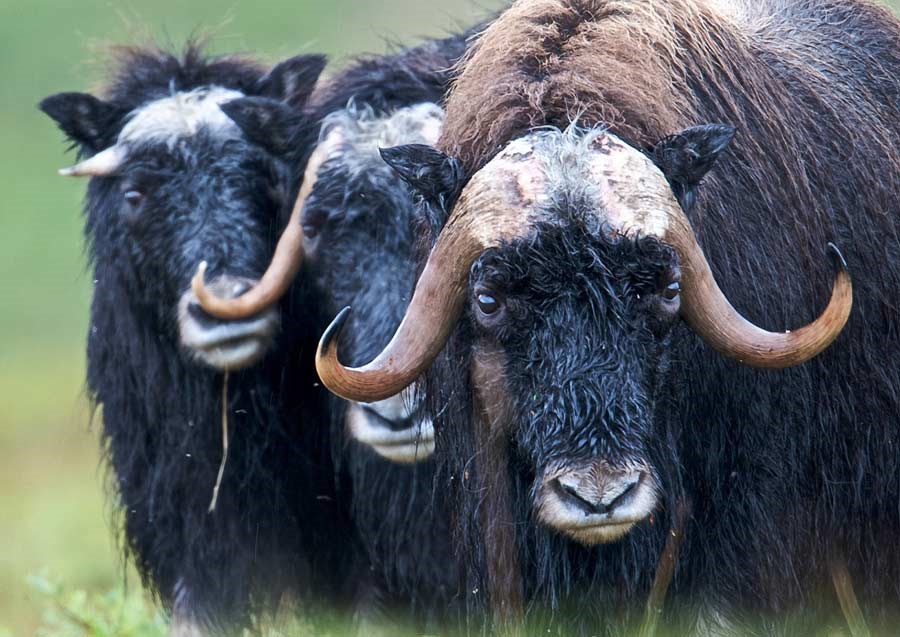 Which animals come to mind when you think of the Arctic? Perhaps whales, polar bears, arctic fox, or reindeer...
Which animals come to mind when you think of the Arctic? Perhaps whales, polar bears, arctic fox, or reindeer...
But there is one oft-overlooked animal -- the musk ox considered one of the largest land mammals of the Arctic. In fact, these animals roamed our planet at the same time as the mammoths and managed to survive the Ice Age.
But now the animals are facing a new danger. Researchers have recently reported an alarming decline in musk ox population, a species currently classified as “least concern.” They have also discovered that musk ox calves are getting smaller, as their habitats change due to global warming. Let's find out more.
Ice Age Mammal

As the largest land mammal in the polar region, the musk ox (scientific name Ovibus moschatus) has the body and horns of a buffalo but has wool like a sheep. The name “musk ox” came from the strong musky smell released from their urine during mating season.
Musk oxen roam the Arctic tundra in herds of ten to twenty in search for grasses and other ground plants they can chew on. During winters, they use their hooves to dig into the snow for roots, moss, and lichen. When faced with danger such as wolves or bears, the herd does not run away. Instead, the adults form a defensive circle around the younger calves facing outwards, and they headbutt away the predators. During mating season, males compete for females by clashing with each other with their strong heads to prove their strength.
However, these Ice Age animals were not able to fend off one danger - human hunters. Their population declined rapidly due to overhunting until they were granted protection in Alaska, Norway, and Siberia. The musk oxen had in fact gone extinct in Alaska, and in 1935, 34 animals were reintroduced from Greenland!
Struggle For Survival
One danger musk oxen face is the rising sea levels caused by melting ice caps. This has caused tsunamis to rise and crash inland. In 2011, following a blizzard and ice tsunami in Alaska, 55 musk oxen were buried alive when a tidal wave hit the shore half a mile deeper than it used to.
In addition, the warming climate has caused falling snow to turn into rain (referred to as rain-on-snow). Rain freezes into ice quickly, covering up the vegetation. The musk oxen are unable to dig out vegetation from under the frozen ice and thus starve. In fact, over a decade ago, nearly 20,000 oxen starved to death because of the rain-on-snow conditions.
But that’s not all. As pregnant mothers struggle in their search for food, they give birth to calves that are smaller and malnourished. Biologists used a method called photogrammetry, which involves taking pictures of the calves from different angles and recreating their head sizes. This novel method allowed them to study free-roaming oxen, both in Alaska and Siberia over several consecutive years.
The musk ox is not the only species influenced by climate changes, others like polar bears and caribou are affected as well. It is important that we are aware of these issues if we want to preserve the world’s animals and their habitats for generations to come.
Sources: NatGeo, Animalcorner.co.uk, naturalhistory.si.edu. tundraanimals.net, sciencenordic.com







